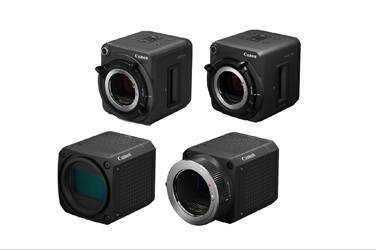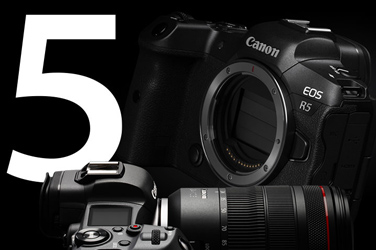
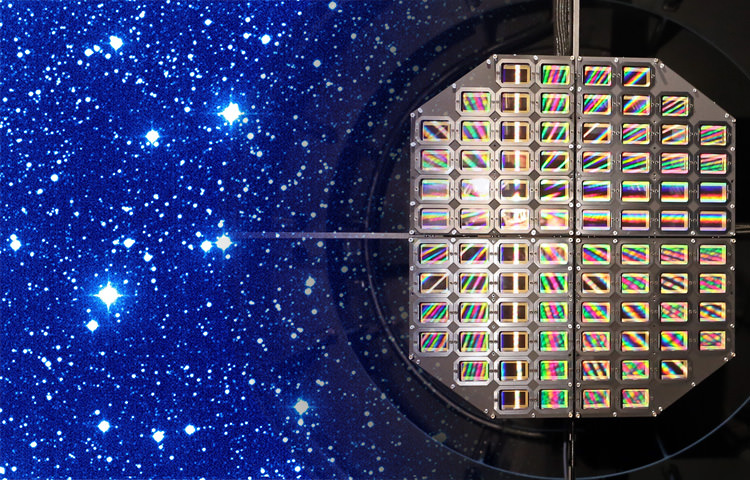
Advancements in CMOS sensor technology spur greater hope for new discoveries
A World First—Video Capture of Celestial Bodies
For the longest time, still photography was the norm for astronomical observation. But all that changed when Canon’s ultra-high-sensitivity CMOS sensor technology made it possible to capture videos of the vast sky and observe changes occurring within a short time frame, raising hopes for more breakthrough discoveries about our ever-changing universe.
April 6, 2020Featured Technology
A CMOS sensor that signified new possibilities in astronomical observation
Until recently, still photography was the conventional method of astronomical observation. However, that was overturned by Tomo-e Gozen, a new astronomical observation system employed by the Kiso Observatory, University of Tokyo*1, which successfully captured videos of the universe.
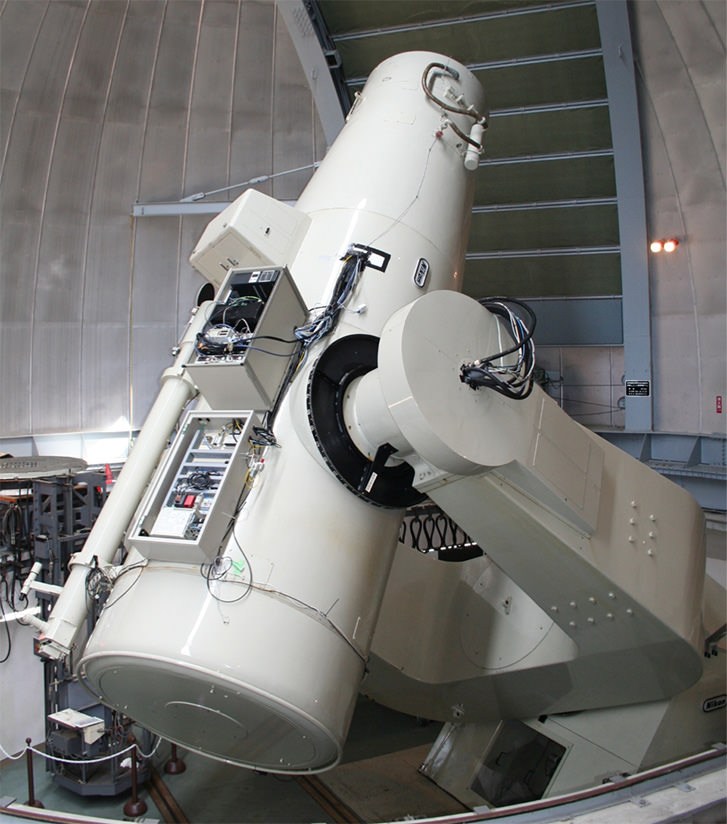
Schmidt telescope at Kiso Observatory, University of Tokyo
The Kiso Observatory, which owns the 105 cm-diameter Schmidt telescope, was established in 1974. The telescope boasts a 9-degree radius field of view (520mm on the focal plane). However, in the 1990s, the small, high-sensitivity CCD sensor replaced photographic plates as the sensor used for astronomical photography, and with that, the characteristic wide angle of view of telescopes could no longer be put to good use at the forefront of research activities.
Searching for a solution, Associate Professor Shigeyuki Sako from the Institute of Astronomy, University of Tokyo became aware of Canon’s prototype for an ultra-high-sensitivity CMOS sensor. Attaching it to the institute’s telescope for a trial shoot, he found that it captured many more faint meteors than he had expected. “I was surprised by the many meteors captured in the footage obtained by the CMOS sensor. It was the first time I saw the universe changing with every passing moment. Until then, I had intended to understand the universe through taking still photos, but still photos probably capture no more than just one aspect of the universe.”
Following that chance encounter, talks started to develop a new astronomical observation system, named after Tomo-e Gozen, a female warrior said to have served Kiso Yoshinaka, a warlord of the late 12th century, during the latter part of the Heian period.
Currently, large astronomical telescopes mainly utilize CCD sensors. However, the slow readout speed of CCD sensors makes them unsuitable for capturing video. As the images have to be taken at a high sensitivity, it is also necessary to install the sensor in a large vacuum cooling device to suppress noise arising due to heat.
The CMOS sensors developed by Canon deliver high sensitivity and high image quality, and produce little noise due to heating. The size of each pixel is 19µm*2 x 19 µm, an area more than 10 times the size of one pixel on a conventional 30-megapixel class digital camera. Enlarging the size of each pixel helps to improve light-gathering efficiency, thereby enabling it to capture faint light emitted from celestial bodies. Technology to reduce noise due to the larger pixel size was also developed concurrently to achieve both ultra-high sensitivity as well as low noise. Eliminating the need for special cooling equipment for noise reduction also made the camera system more compact. Equipped with 84 ultra-high-sensitivity CMOS sensors, Tomo-e Gozen delivers an ultra-high resolution of approximately 190 megapixels while enabling capture of ultra-wide-field video images covering 20 square degrees*3.
- *1Kiso Observatory, Institute of Astronomy, School of Science, the University of Tokyo
http://www.ioa.s.u-tokyo.ac.jp/kisohp/top_e.html - *2µm: Micrometer or one-millionth of a meter
- *3Square degree: A unit used in astronomy to denote the area of the sky. An area of 20 square degrees is equivalent to that of 84 full moons.
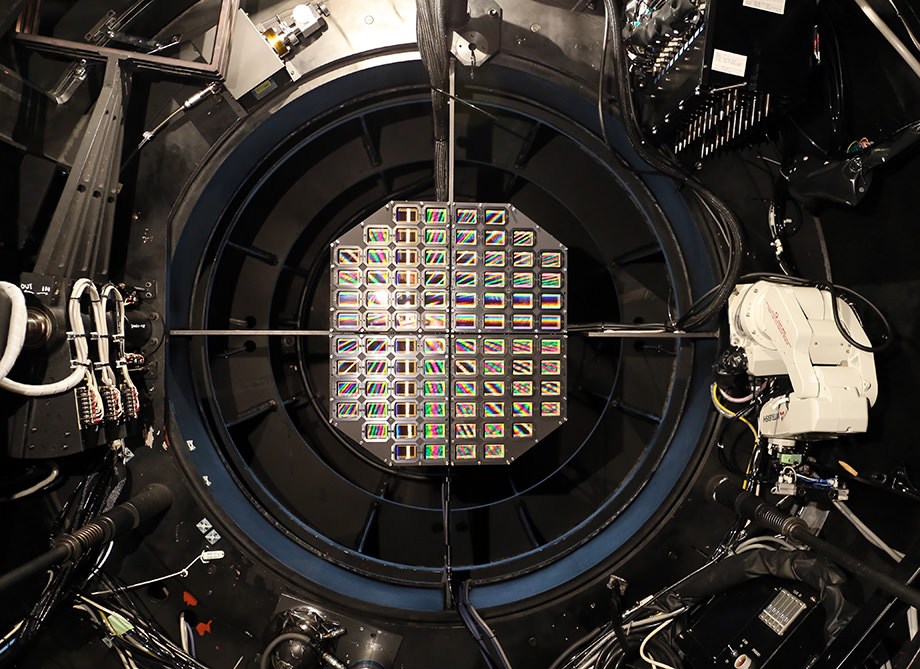

The Tomo-e Gozen camera that is installed in the focusing area of the Kiso Schmidt telescope. It is equipped with 84 ultra-high-sensitivity Canon CMOS sensors.
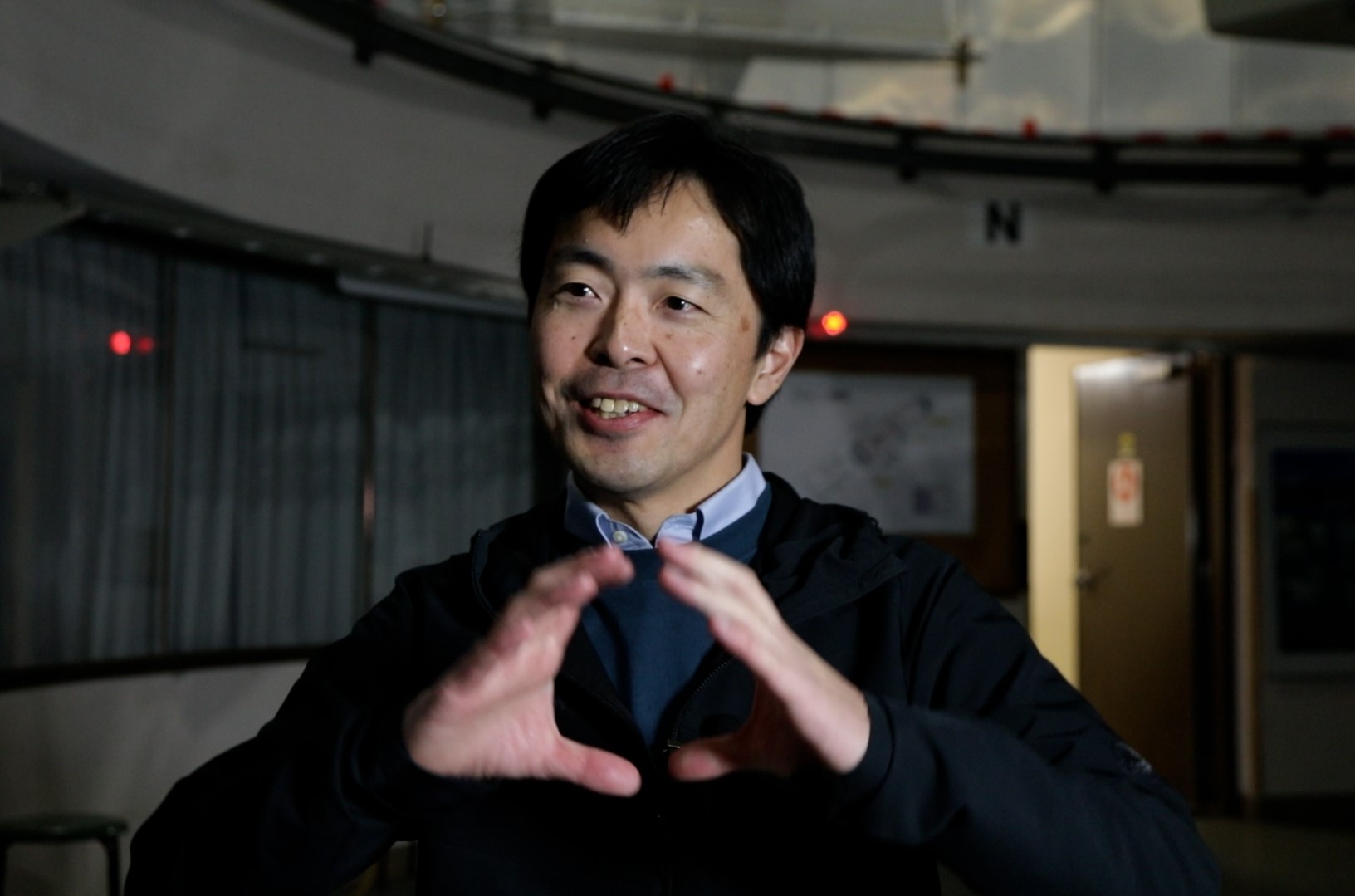

Associate Professor Shigeyuki Sako of the Institute of Astronomy, University of Tokyo.
Capturing video footage of the universe
The biggest breakthrough of the Tomo-e Gozen system is its ability to record video footage of outer space across an extensive area. The slow readout speed of the CCD sensors that had conventionally been used in astronomy made them unsuitable for video observation. However, equipped with 35mm full-frame ultra-high-sensitivity Canon CMOS sensors, Tomo-e Gozen became the world’s first astronomical observation system capable of recording video at 2 frames per second, considered extremely fast for astronomical observation equipment. The University of Tokyo’s Kiso Observatory is currently the only observatory in the world capable of conducting video surveys of the changes in the universe that occur within a time frame of one second or less.
The video recorded by Tomo-e Gozen in one night of observation can be as large as 30 terabytes (equivalent to 10,000 120-minute movies). This is big data about the universe, and analyzing it with AI makes it possible to understand unexplored parts of the universe.
Associate Professor Sako is also thinking about using video astronomical observation to improve the universe’s environmental issues. “Surveying the sky through video allows us to see many moving objects. At least 99% of these are man-made, and most of them are junk and do not serve any purpose. Observing the distribution of space junk and transmitting information about it to society is one of our missions.”
Quest to conquer the frontiers of astronomy
In October 2019, Tomo-e Gozen went into full-fledged operation. Making a number of iterative shifts to its field of view, it conducted a video survey of the entire sky. The Observatory plans to use it to perform all-night shoots about 100 times a year, which will help to significantly increase the probability of capturing important transient phenomena. In fact, discovered a number of supernovae* and near-Earth asteroids, raising hopes of new discoveries about the universe through large-scale video survey.

A comparison of capabilities to survey hourly transitions in celestial bodies.
Associate Professor Sako hopes to one day discover a “second Earth”. “During a video observation of celestial bodies, we once saw something pass in front of visible stars. In such instances, if the visible stars are gradually covered from view, we can deduce that the passing object has an atmosphere. If this phenomenon is frequently observed, we may be able to discover a ‘second Earth’ that has an atmosphere,” he explains.
Video observation has made it possible to observe changes in the universe occurring within a short time frame. Canon and its CMOS sensor technology support the quest to conquer the frontiers of astronomy.
- *A major explosion that occurs at the end of a massive star’s lifetime.



